Discover the breathtaking beauty of Serengeti and Ngorongoro Crater, two of Africa’s most iconic wildlife destinations, with Sudarshana, exclusively for Different Truths.
Serengeti is a land where the earth curls down at the far horizon and the abundant sky overhead bends over to pick up the curling edges. There is nothing to break your line of sight, as you turn your head 360 degrees around. A land where millions of luminescent eyes mirror the dazzle of twinkling stars crowding the sky as darkness descends. Animals roam free and have first rights on more than eleven thousand sq miles of savannah, woodland, and riverine forests. Fences, boom barriers, or wire mesh do not exist.
From this paradise, Frank drives us across to another incredible land formation, the Ngorongoro crater, a complete antithesis. Almost thirty thousand large mammals and many more inhabit a mere hundred square mile area inside a caldera’s steep walls. The animals through generations breathe their first and last inside this crater of an extinct volcano. While herds of wildebeest and zebras traverse the plains of the larger Ngorongoro Conservation area, visiting herds cannot enter the crater.
Biggest Caldera
The crater is verdant, having evolved its ecosystem. It is the biggest intact caldera on earth, that has not filled with water and the second of Africa’s seven natural wonders we are lucky to tick off.
Ngoro, ngoro, ngoro…. What does that sound like? The Maasai ear hears cowbells ringing merrily in that word, bells that are tied to the neck of the lead cow in a herd—which tells them how fast the herd is moving while grazing and in which direction. Hence the onomatopoeic name, Ngorongoro.
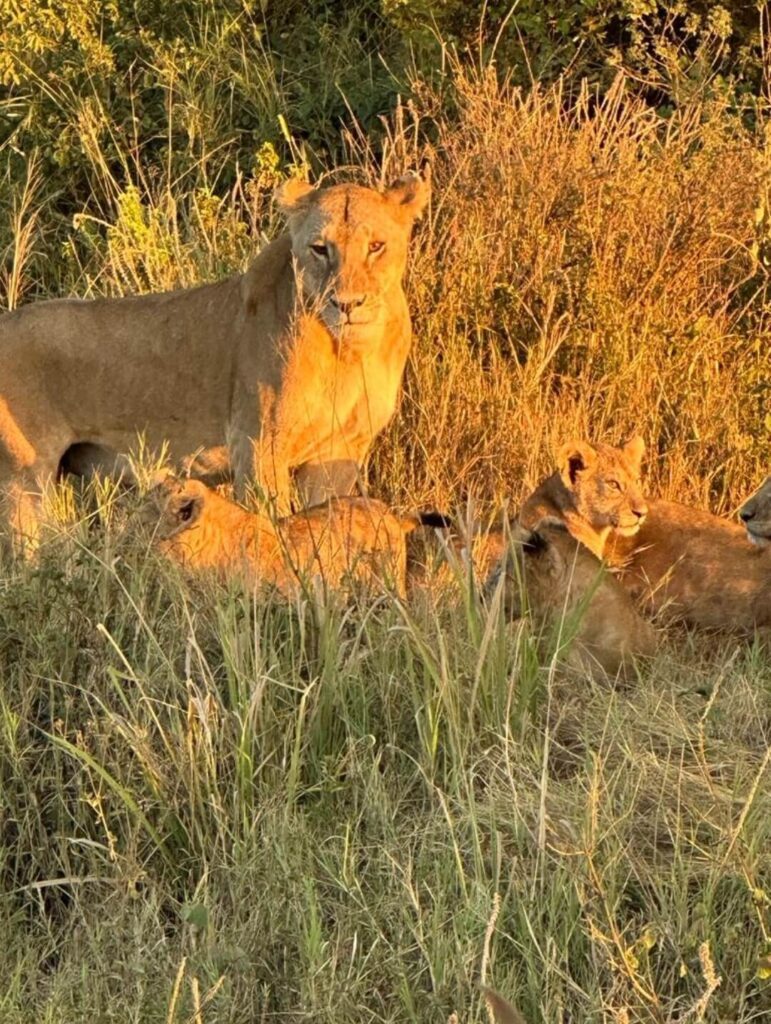
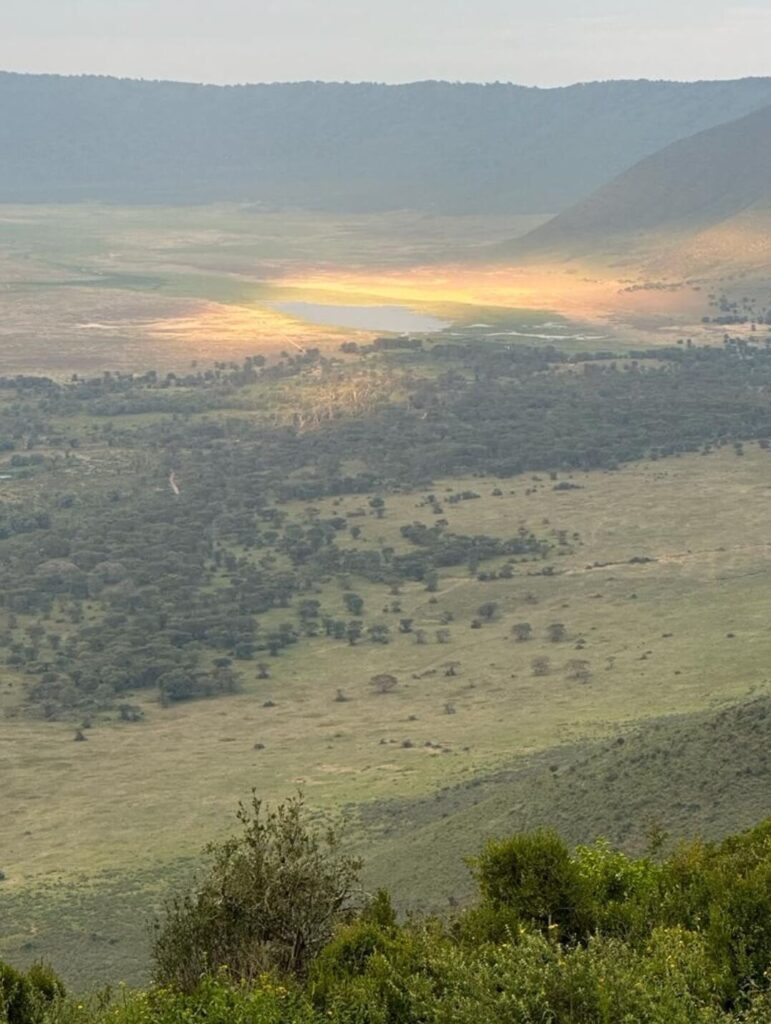
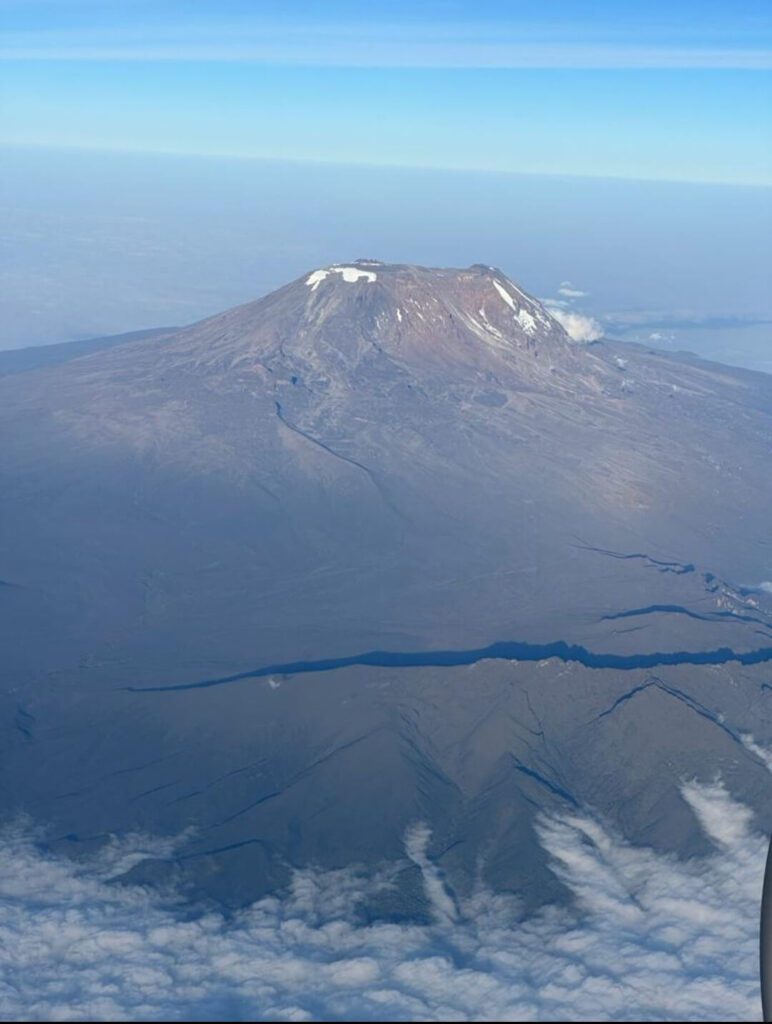
The Conservation Area is a protected UNESCO World Heritage Site, located in the crater highlands area of North-eastern Tanzania. This was established to conserve wildlife & natural resources and safeguard the interests of indigenous people. Close by is Ol Doinyo Lengai, the only volcano in Tanzania that still smoulders.
When the underlying magma body of an active volcano’s cone could no longer support it, it imploded inward, creating the crater over two million years ago. Minor eruptions followed, creating smaller inverted cones that filled up with water to form lakes. The biggest among these is the shallow soda lake, Lake Magadi, that blushes pink in the season with flamingoes and similar coloured algae. The peak of the volcano was higher than its cousin Kilimanjaro.
The Great Rift Valley
In the Great Rift Valley, between Ngorongoro and Serengeti stands Olduvai Gorge, formed thirty thousand years ago. Nicknamed the cradle of mankind and the Grand Canyon of anthropology, it is one of the most important prehistoric sites in the world since it holds some of the earliest evidence of the first humans that walked the earth. Nutcracker Man, with his massive molars and enormous jaw, was an esteemed resident 1.75 million years ago. Two massive skulls sculpted on top of the Olduvai Gorge Monument on the road from Serengeti National Park to Ngorongoro Conservation Area stand testimony to this history.
Late in the afternoon, we arrived at Serena Safari Lodge. Clinging precariously to the jagged rim of the crater, the lodge brought to mind the cabin teetering on the cliff’s edge in Charlie Chaplin’s Gold Rush! We were assured of safety in numbers if we were to take a tumble, because the entire rim played host to lodges, all inclined towards the same danger, to give us the best views of the crater waiting to embrace us in its yawn.
At first sight, the sun-basted crater was a still-life pastel painting, while Lake Magadi lying placidly in its centre was a naughty dazzle. Soon the sky misted over and the crater disappeared as dusk staked its claim. Cavernous darkness followed.
Fragile Environment
To protect the fragile environment, the Conservation Area’s authority issues six-hour permits to visit the caldera floor. Collecting our passes we descended into the crater early next morning. It was a steep downhill drive, till we reached the flat bottom of the large bowl.
Famous for an enviable density of animals, this area is blessed with the highest density of lions in all of Africa. Naturally, wildebeests and zebras abound to complete the food chain. Impalas and giraffes were conspicuous by their absence, apparently because the trees and greens that form their diet do not grow here. Also, the walls are too steep for Tanzania’s national animals, wandering giraffes, to try to walk down.
Lion prides came into view soon enough. Fingers crossed that we would be lucky enough to see a kill. We scoured the grasslands, but the best we witnessed was a grisly fresh kill, surprisingly abandoned. Well-fed lions caught their forty winks with cubs frolicking nearby, under the watchful eyes of mothers and aunts. Prides photogenically picnicking under trees by water bodies, on the parched black earth at places where the hot sun had burnt down the grasses, a huge lion rolling on his back getting a good scratch, their amber eyes reflected the green-gold of the surrounds, which they ruled over.
Animals are used to safari vehicles and paid no heed. Even the cubs took their time to follow their mother, sitting down instead on the path in front of our vehicle, saying come play with us!
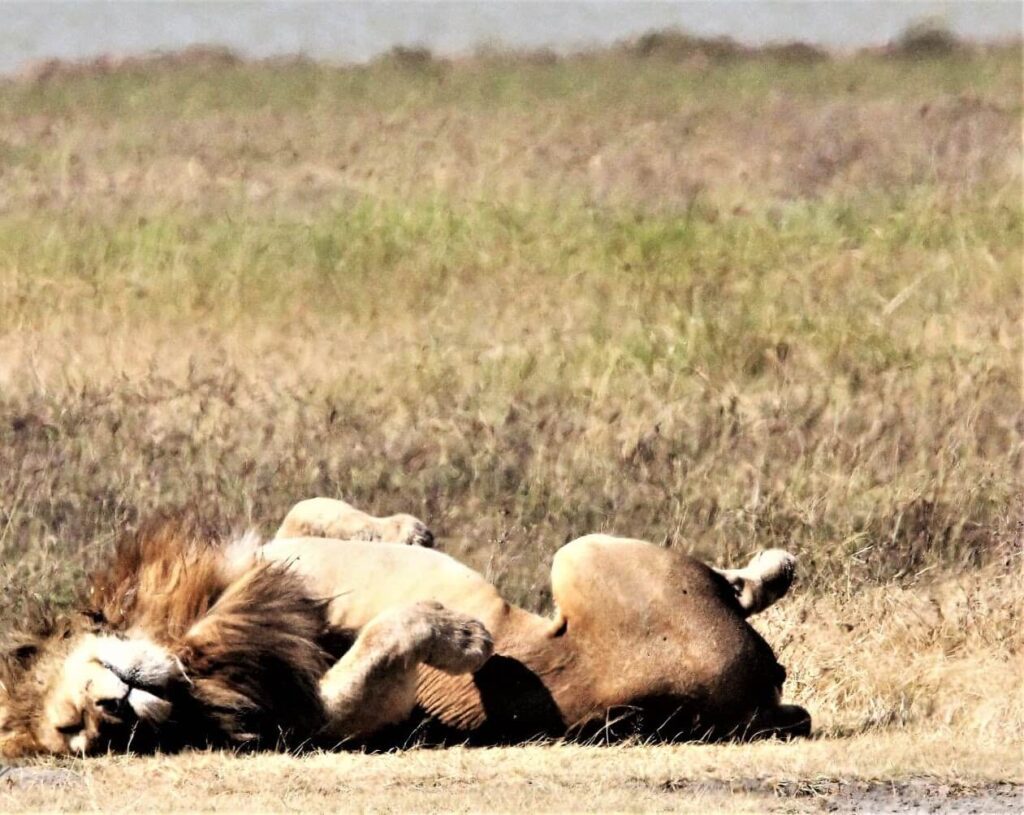

No toilet breaks, Frank had warned sternly, before we took off, because facilities were scarce. But alas, morning coffee played the culprit, and nature called out to one of us urgently. Since practically every bush is equipped with nasty thorns, tsetse flies, dozing animals, or one of the 50-odd venomous snake varieties to welcome the intrepid, the only option was to water the rear wheels. Job done, no sooner had we started to roll again, than six gasps of O-shaped alarm escaped our mouths as we learnt how deceptive Africa’s proverbial garden of Eden was. Bang beside the vehicle, a couple of majestic lionesses resting in the grass with their cubs had bolted upright, menacing disapproval of our dangerous act of transgression writ large in their icy stares!
Termite Mounds
Not a single cheetah crossed our path, although Frank spotted one or two on termite mounds in the distance, alas, even our binoculars failed the test of his hawk eyes! Africa’s most beautiful large animals are lovingly attached to ugly termite mounds. They mark their territory by spraying these mounds in their patch each morning, which the elusive animals then proceed to use as their eyries to sit in ambush for prey. A sad compromise, because they need to eat every 24 hours and the other high grounds, like granite kopjes in Serengeti, are monopolized by lion prides!
Like on all other safari days, a working lunch was spread out in the bush by the lakeside, by our super-efficient guides, on makeshift tables, with meticulous care. Gingham tablecloths in the wild surroundings were something to savour. A photography break and we headed back to wind up the caldera walls before sundown. Far in the distance, Frank pointed to a spot which was called the elephant graveyard. Old elephants came to this soft, marshy land with easy access to food and water to live out their last days alone, leaving heaps of bones behind. We were not sure whether this was a poignant truth or a local myth.
The next morning saw us back on the road to Arusha, skirting Manyara National Park. Time was not on our side to reroute to a drive through the park famous for its gorgeous baobab trees, but Frank gracefully indulged my desire to see at least one of the elegant giants. The vehicle came to a halt by the roadside beside an extremely graceful tree, with branches aspiring to hug the whole sky. Frank said it had stood sentinel for 5000 years. Africa stuns at every turn! These ancient, wise sages are proof of the nearly unchanged ecosystem of the area from prehistoric times.
Speeding by small shanty towns with roadside shops in rows, selling art, paintings, wooden artefacts, masks and, of course, the ubiquitous magnets, Maasai herdsmen passed us by in their colourful, chequered shuka robes, with iron rods in hand. We drove in silence, our minds haunted by memories of towers of giraffes trying to drink water at pools in the most gawky yet elegant fashion, schools of grunting mud-splattered hippos, skittering antelopes, bushbabies staring down at us with large, startled eyes from treetops at night, a couple of secretary birds stalking prey on long stilt-like legs, two porcupines, one of the shyest animals of Africa, chasing each other playfully at dawn, with their quills released and rattling.
Who can forget quaint animal facts like tiny dik-dik being in Christian wedlock, because they pair for life, formidable yet slow-moving hippos daring to trundle on land only in the darkness of nights to feed, wildebeest and zebras sharing a symbiotic relationship because they feed on different parts of the same plant and while the former excel at sniffing out water sources, the latter are better at sniffing danger, as well as navigating?
Nostalgia creeps in even as we hug goodbyes to our wonderful guides, with Mount Kilimanjaro hiding behind a veil of clouds, bashful, as it had been on the day we had arrived. In farewell, however, Tanzania decides to hold nothing back. As our flight takes wing, clear as crystal, first Mount Meru, and then the splendid Kilimanjaro come into full view, resting against an azure blue, high above the cloud level.
Asante, we say, grateful for this precious, precious gift of an unforgettable experience!
Photography by the author




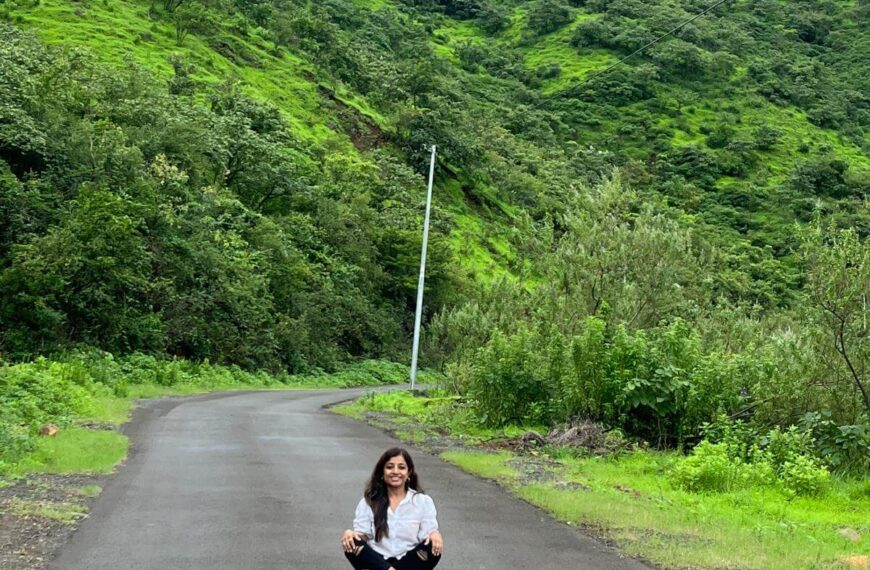


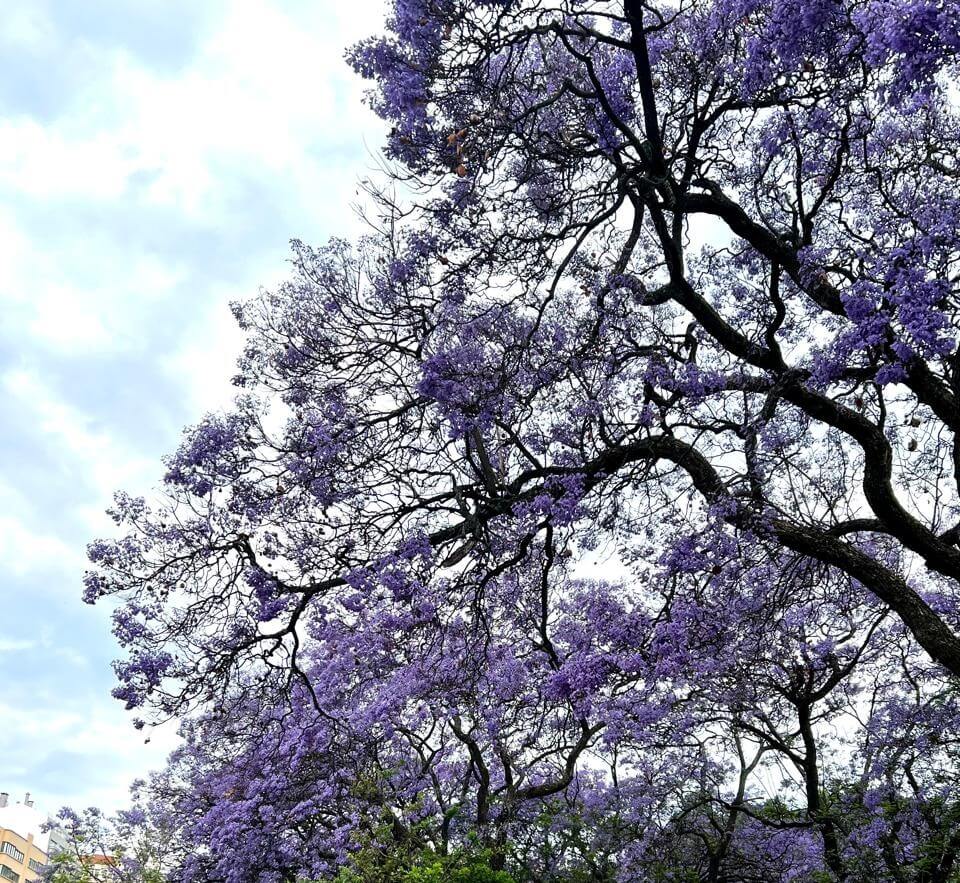
So wonderfully written travelogue…It takes you through the whole event by making it visualise…Africa is now at the top of my travel wish list.